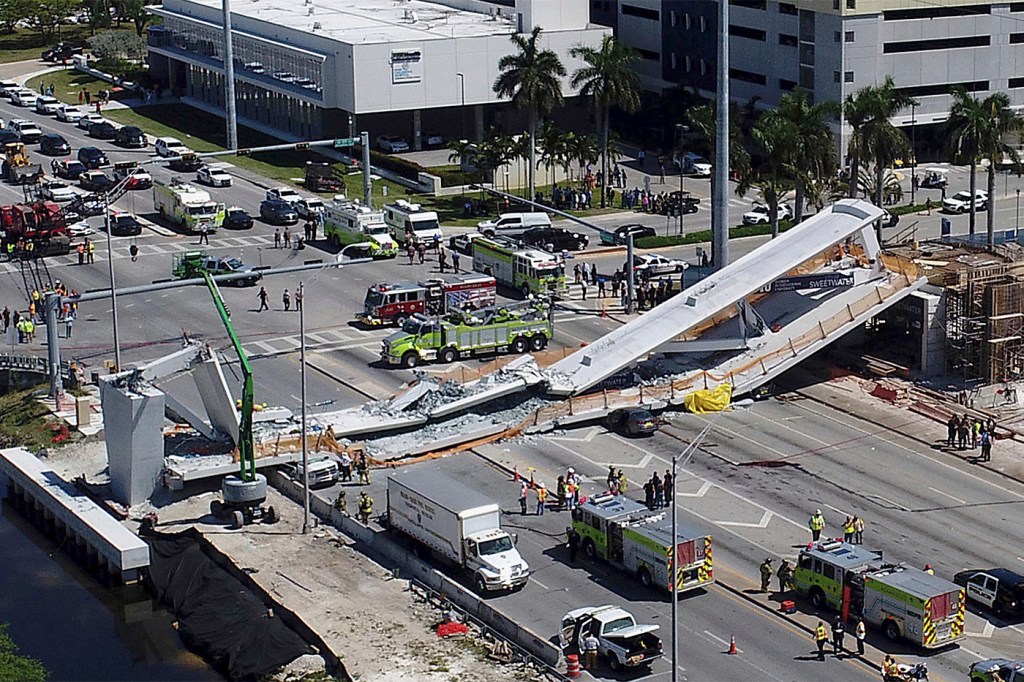Engineering prof says Florida bridge collapse an anomaly, urges close look at old structures

A 950-ton pedestrian bridge collapsed in Miami on Thursday, killing at least six people and crushing as many as eight cars. The bridge was still under construction when it fell onto a busy seven-lane highway, but it was reportedly designed to withstand the strength of a Category 5 hurricane and was supposed to last for more than 100 years.
We asked Jerome Hajjar, CDM Smith Professor and chair of the Department of Civil and Environmental Engineering, to explain the “accelerated bridge technique” used and what safety codes are in place for bridges of this type.
What is accelerated bridge construction?
Accelerated bridge construction has been an area of research and an increasing area of practice for over a decade. We’re seeing increasing interest in it. The basic approach is to design a bridge in ways that allow major components to be fabricated off-site and brought on site in a way that dramatically shortens the timeline. It provides the potential for much less disruption, fewer logistical issues, potential cost savings, and perhaps even opens up opportunities for replacements that would otherwise have been difficult. A wide range of work has been done on different types and sizes of bridges. Certainly, there have been instances where this approach has been used and proved to be quite safe. It’s very hard to know at this point what caused the bridge failure in Florida.
Florida politicians said there would be a “thorough investigation” of what caused the bridge to collapse. From an engineering perspective, what are the next steps to determine what happened?
Engineers are able to investigate a site and try to detect anomalies that might have happened during construction. They can review drawings and discern anomalies that didn’t get picked up in design, though they usually would have been. They are able to conduct interviews, perhaps with contractors and other engineers. You would want to understand what was happening on the bridge at the time, if anything. And from there you can piece together likely causes. In this country, we’ve been good at learning from these situations and mitigating risk for the future.
The pedestrian bridge spanned across a major thoroughfare. Are there particular safety codes and regulations for these types of bridges?
With all structures, the national codes are structured to mitigate risk of catastrophic failures, though we can never bring the risk to zero. We have national standards, but there’s a level of risk that we’re willing to accept as a country. We try to have the risk of any failure to be quite low, but It can never be zero.
One of the most critical things in all of this and one of the reasons why we have very safe infrastructure in the U.S. is we have great inspection protocols during and after construction. Not all countries have good inspection protocols. We also have good independent validation of designs.
Overall, I would say our procedures are quite sound. We’ve learned from issues of the past. A failure like this is an anomaly. The more pressing issue that doesn’t relate to this collapse directly is the country’s aging infrastructure and the challenges we’ve had for funding. That will catch up with us. Unless that’s addressed in an increasingly comprehensive fashion, mitigating that risk in older infrastructure will be harder. We have great engineering in place, but we need greater investment.